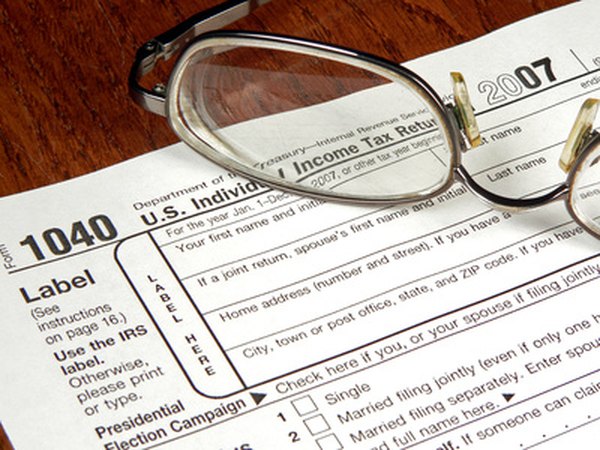Reporting IRA Rollover Withdrawal to the IRS
Use Form 1040 or 1040A to report your rollover withdrawals.
tax forms image by Chad McDermott from Fotolia.com
Rollovers let you move money from one individual retirement account to another. Even if you roll over your distribution to the same bank, you'll still get a Form 1099-R showing a distribution. You have to report the rollover on your taxes so that the Internal Revenue Service knows why you aren't paying taxes on the reported rollover withdrawal. How you report it depends on if you rolled over the entire amount and whether you converted money to a Roth IRA.
Tax-Free Rollovers
If you did everything right and won't owe any taxes from your rollover, you still have to report it on your return with either Form 1040 or Form 1040A. On line 15a of Form 1040 or line 11a of Form 1040A, report the entire amount of the distribution. Then, report "$0" as the taxable portion of the distribution on line 15b of Form 1040 or line 11b of Form 1040. To cap it off, write "Rollover" next to line 15b or line 11b so the IRS knows what you did.
Incomplete Traditional IRA Rollovers
If, for whatever reason, you didn't roll over all of the funds, anything not rolled could be taxable and hit with the 10 percent early withdrawal penalty. If you're rolling money from one traditional IRA to the other, the portion not rolled over is fully taxable unless you've made nondeductible contributions. If so, use Form 8606 to figure the taxable portion. On your taxes, report the entire amount on line 15a of Form 1040 or line 11a of Form 1040A, then enter the taxable portion on line 15b of Form 1040 or line 11b of Form 1040A. Finally, write "Rollover" next either line 15b or line 11b. If you're under 59 1/2, you also have to fill out Form 5329 to calculate the early withdrawal penalty.
Incomplete Roth IRA Rollovers
For Roth IRA rollovers, the portion that isn't rolled over is taxable only to the extent it exceeds the contributions in your account. If you didn't roll over the entire amount, use Form 8606 to figure the taxable portion, then follow the reporting rules as incomplete traditional IRA rollovers. On your taxes, report the entire amount on line 15a of Form 1040 or line 11a of Form 1040A, then enter the taxable portion on line 15b of Form 1040 or line 11b of Form 1040A. Finally, write "Rollover" next either line 15b or line 11b. If you're under 59 1/2 or your Roth IRA hasn't been open for at least five years and a portion of your withdrawal is taxable, you also have to fill out Form 5329 to calculate the early withdrawal penalty.
Roth IRA Conversions
If you use a rollover to convert from a traditional IRA to a Roth IRA, you're going to owe income taxes because you're moving the money from a pretax account to an after-tax account. However, you won't owe any early withdrawal penalties. On your taxes, report the entire amount of the conversion on line 15a of Form 1040 or line 11a of Form 1040A, then enter the taxable portion on line 15b of Form 1040 or line 11b of Form 1040A. After that, use Form 8606 to figure the taxable portion and write the taxable amount on line 15b of Form 1040 or 11b of Form 1040A.
References
Resources
Writer Bio
Based in the Kansas City area, Mike specializes in personal finance and business topics. He has been writing since 2009 and has been published by "Quicken," "TurboTax," and "The Motley Fool."

